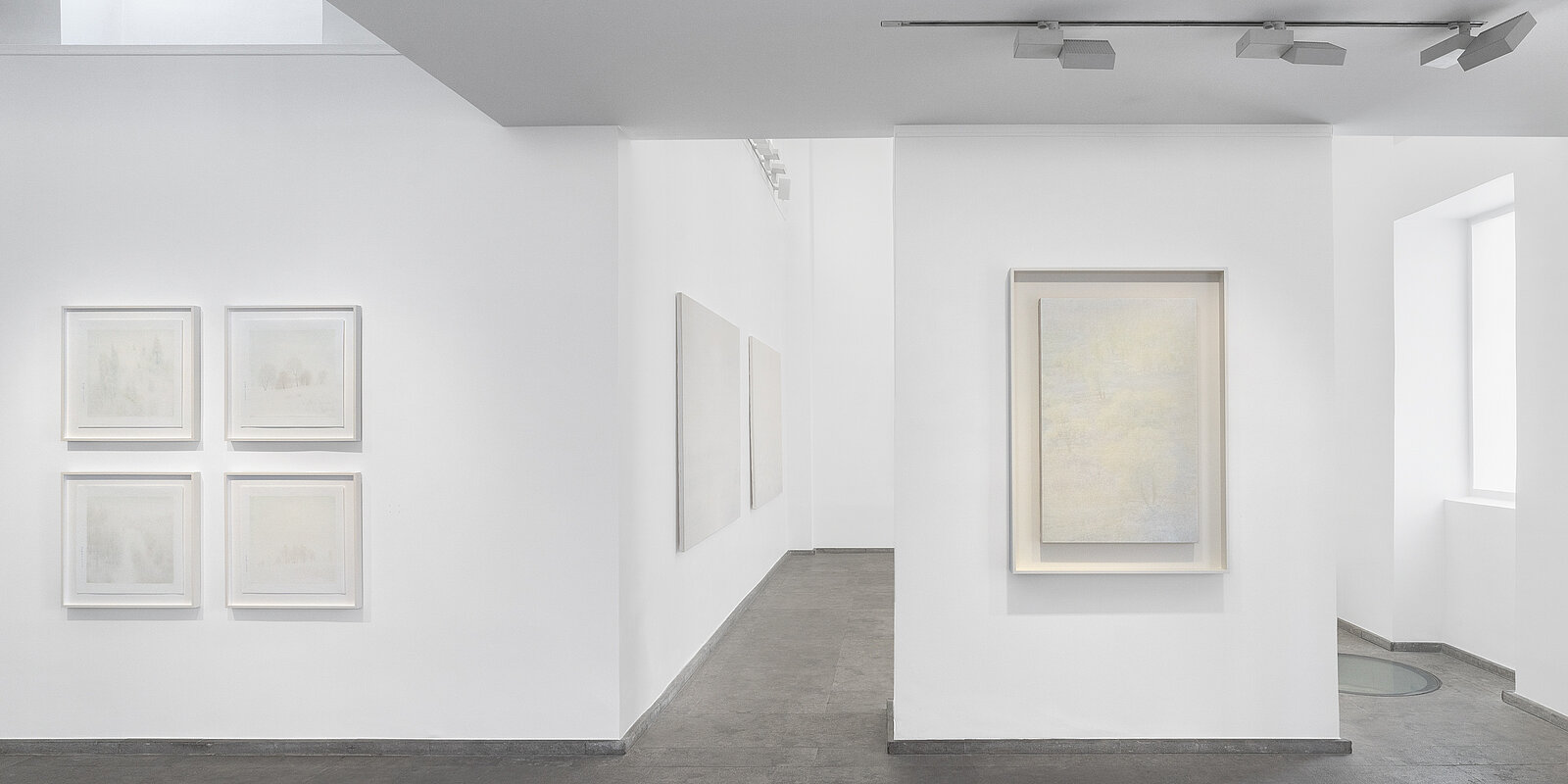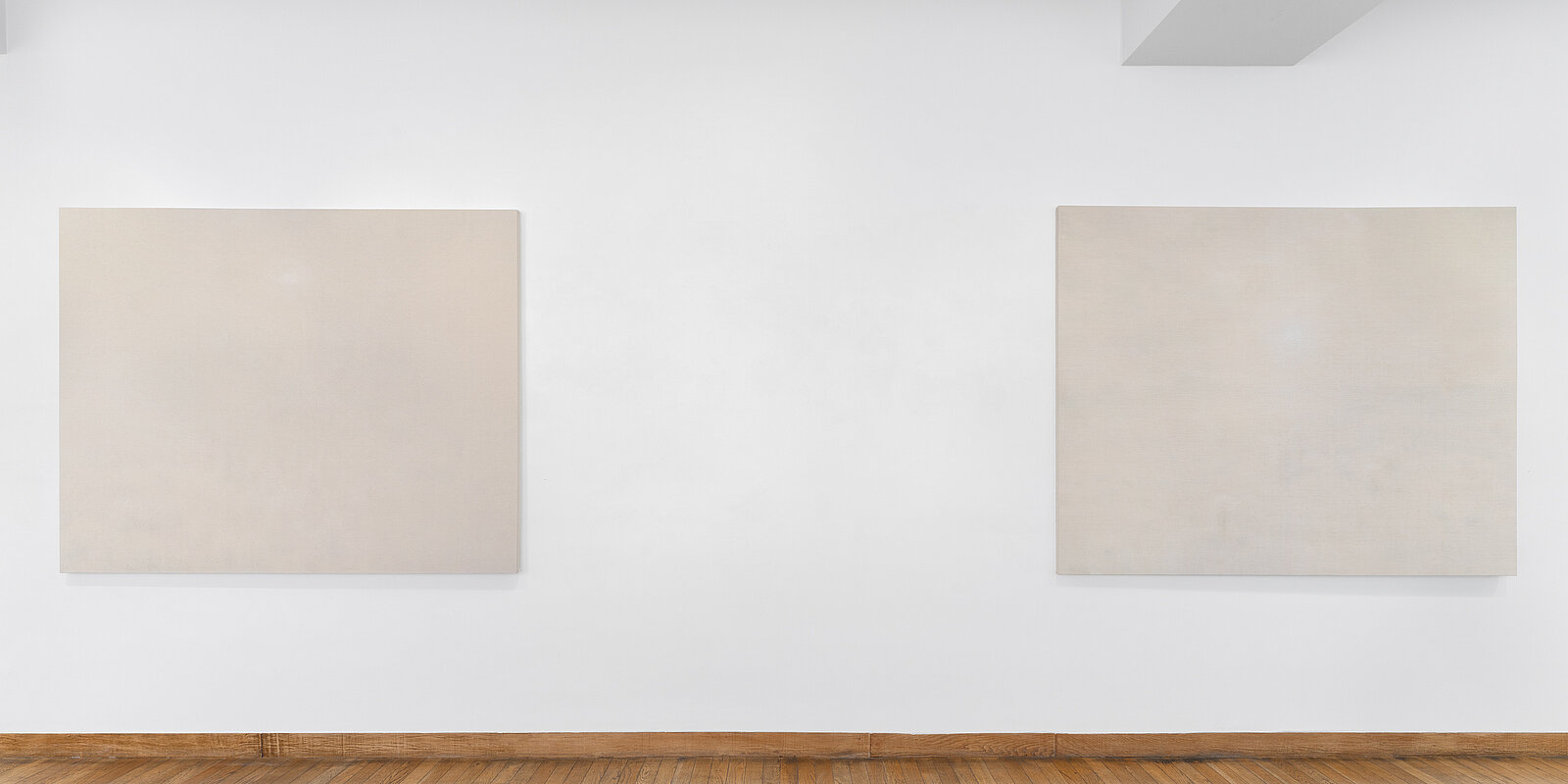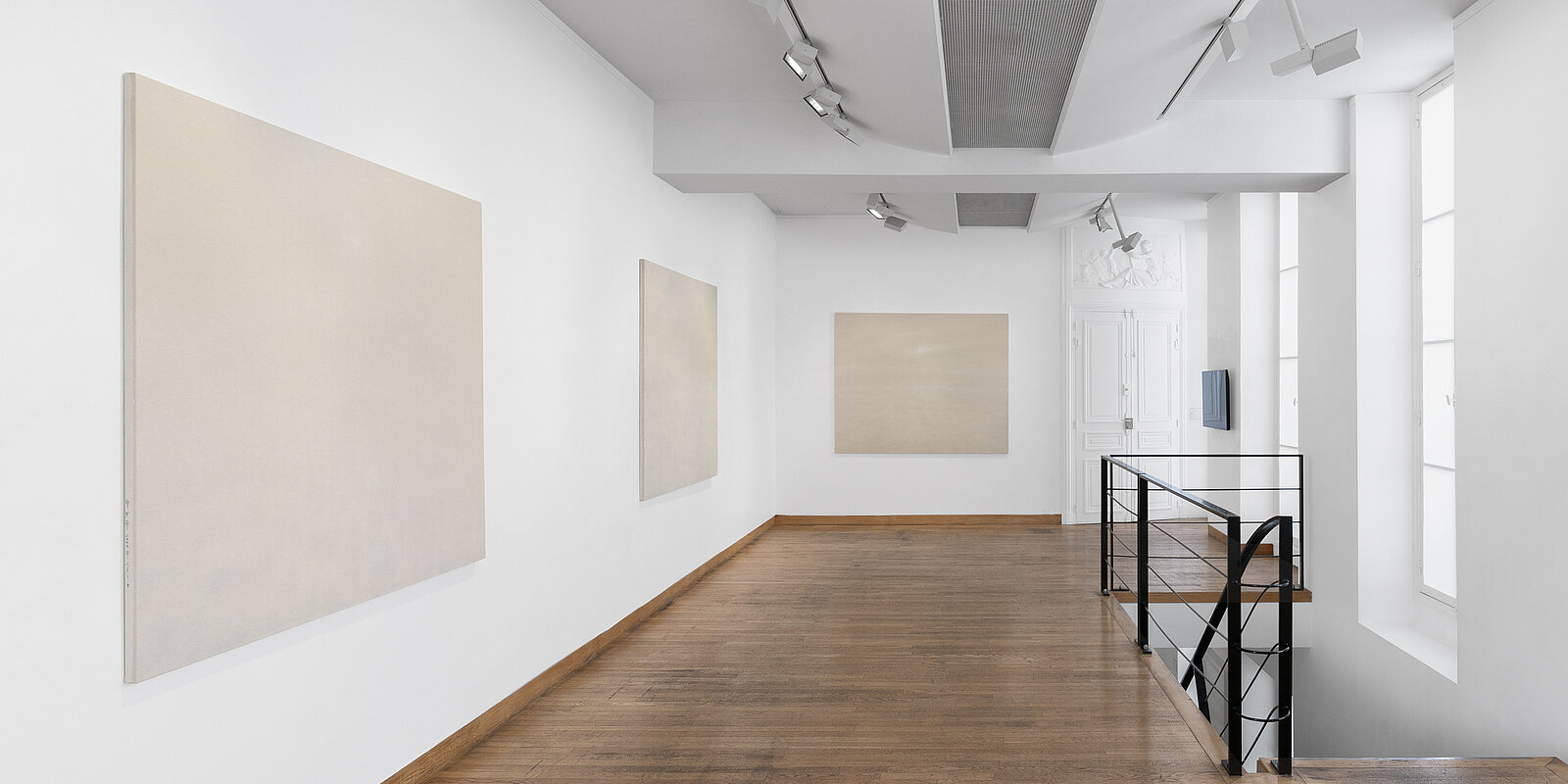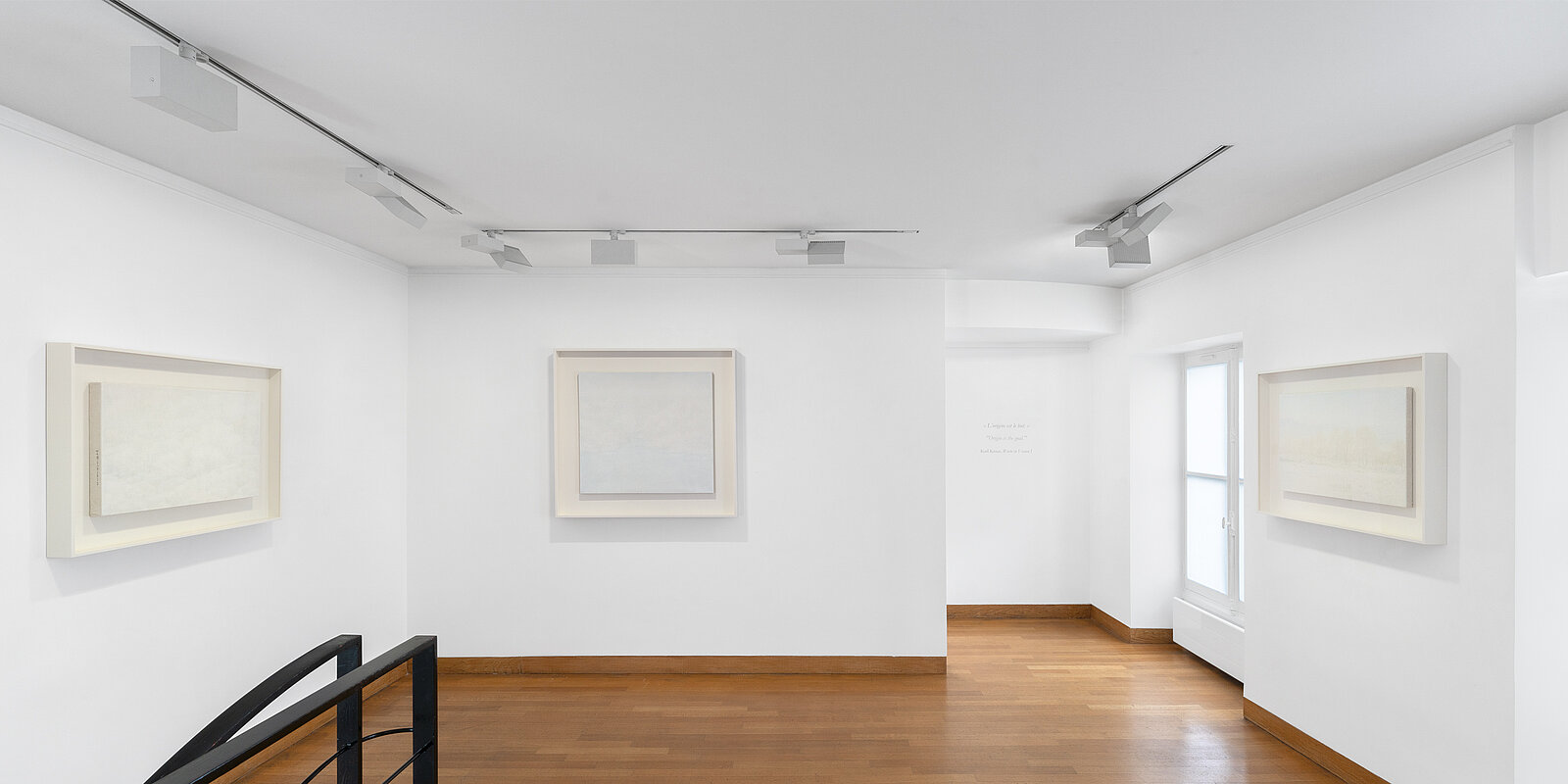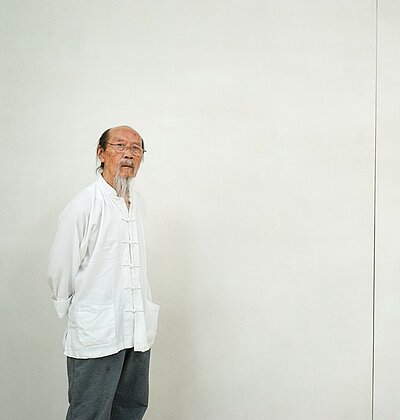Qiu Shihua: Neiguan
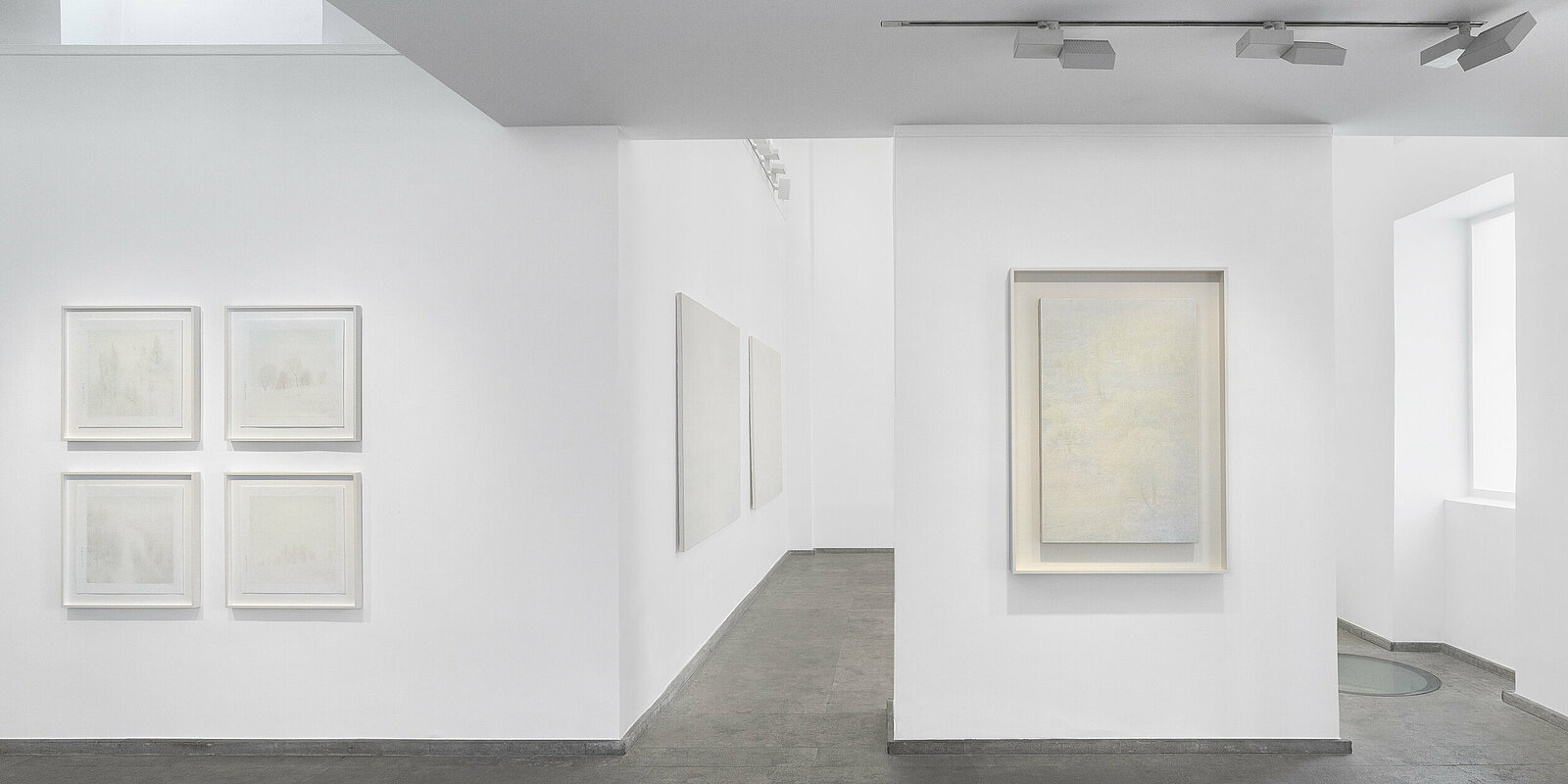
Galerie Karsten Greve Paris
Dienstag - Samstag 10 - 19 Uhr
Vernissage am Donnerstag, den 7. September 2023 von 18 - 20 Uhr.
Der Künstler ist anwesend.
Konferenz am Samstag, den 9. September ab 17 Uhr.
Mit Françoise Bonardel (Philosoph und Schriftsteller) und Marguerite Pilven (Kunstkritikerin und Kuratorin).
Englische Version
Following the success of our precedent exhibitions devoted to the Chinese painter Qiu Shihua, Galerie Karsten Greve is delighted to present a new solo show featuring fifteen of the artist’s canvases and works on paper from 1995 until today, on display for the first time in our Parisian gallery.
With this new presentation, Qiu Shihua continues his steadfast exploration of the landscape genre. Through a panorama of works, the artist engages the viewer in a sustained exercise in seeing. Defying immediate readability, Qiu Shihua’s art reserves a plethora of visual surprises for the patient eye and requires the onlooker to adjust their gaze continuously, thus allowing the painting to emerge in time. While nature and landscapes are a constant in Qiu Shihua’s work, his art starting from the 1980s is deeply influenced by Taoist philosophy. This presentation therefore invites the visitor to delve into the artist’s unique pictorial world and above all, to experience first-hand its introspective nature that some have described as “soul landscapes.”
Born in 1940 in Zizhong, in Sichuan province (China), Qiu Shihua began to paint, self-taught, from a very young age before studying at Xi’an Academy of Fine Arts. Despite his soviet-style education, the artist was familiar with the French and German schools of painting and practiced outdoor painting. By the time he began his studies, China’s ancient artistic and literary culture was increasingly side-lined by the Communist politics of the day. Under Mao’s leadership, traditional Chinese artists were under pressure to adapt their painting to Communist themes and styles, leaving little room for the intelligentsia to flourish. Illustrating posters for a living, Qiu Shihua was commissioned to create art in this vein too.
It wasn’t until 1984 during a visit to Europe that Qiu Shihua really encountered the pioneers of the late nineteenth and early twentieth century European art, beginning with the Impressionists. It was also during this time that the artist visited the Gobi Desert which marked a turning point in his life and his art. Evacuating the unnecessary and the abundance of information he had accumulated over the years, the artist’s creative process would from hereon be aligned with his spiritual thinking. In his canvases, Qiu Shihua gives shape to the Taoist concept of “action through inaction” – letting results arise through their own paths – or rather, its opposite: non-action through action. In his words: “I began to cultivate myself according to the principles of Taoism, which took a very long time. From that point on, my heart became calmer and I became more relaxed. Taoism unconsciously permeated my work (…). In the past I had always accumulated more and more information and felt that I was always looking outwards, but now I look inwards – it was a long road back.” In Taoist ideology, humans and nature are complementary. The quest for wisdom lies in harmony, which is found when the heart and spirit are aligned with the Tao, the Way of Nature.
Deeply knowledgeable about Chinese and Western painting, the artist explores diverse techniques in a cross-fertilisation of both traditions in his paintings. Qiu Shihua’s art offers visions of landscapes that oscillate between the Western idea of abstraction and reduction, on the one hand, and Taoist concepts of repetition and emptiness, on the other. Techniques established by artists such as Claude Monet and William Turner can be identified through the dissolution of the landscape into a painterly process and the treatment of subject matter through the study of light and atmosphere. In keeping with the Chinese tradition of Shanshui painting (shan - mountain and shui - water), he rhythms the surface of the canvas with an interplay of fullness and emptiness. The eye therefore travels over the entire canvas, never settling on one specific area for too long. Also reminiscent of traditional Chinese scroll paintings which afford an intimate and progressive viewing for the spectator, Qiu Shihua’s work distances itself from one-point perspective, characteristic of Western art and appears to unravel itself in a temporal process. Furthermore, the merging of Eastern and Western traditions is exemplified through Qiu Shihua’s choice of materials. Instead of the traditional ink on paper adopted by Chinese artists, he opts for oils on canvas. The result is unique – neither landscape nor total abstraction, a fusion of the ancestral and the contemporary, the Western and the Eastern.
When encountering the artist’s work for the first time, one’s immediate impression may be that of monochrome painting. White is dominant in Qiu Shihua’s art. In Chinese, the word for ‘white’ and the word for ‘empty’ (respectively Baise and Kongbai) have the same root (-bai-). Untitled, his paintings do not allude to a specific or imaginary place and therefore do not guide the viewer towards an interpretation. Beginning his process with a landscape painting composed of primary colours (blue, red or yellow), Qiu Shihua proceeds with a careful and deliberate erasing and revealing of details, inlaying the motifs in thin veils or glazes of diluted pale paint. In his most challenging and captivating paintings, the image is concealed among the layers, leaving little trace of the genesis of creation. Pushing the image to the fringes of abstraction, the canvas appears almost untouched. The colour white therefore responds to a wish for emptiness, the essence of all things. However, in Qiu Shihua’s art, it is not only the spatiality within the picture that we consider, but its relationship to real space.i Depending on the light and where one is standing, the faintest of figurative elements appear and disappear like apparitions. Some paintings give “respite” to the spectator’s gaze by offering more visual “clues”, but it is highly unlikely that spectators will see the same motifs at any given time. One could be witnessing a mass of clouds or treetops, an expanse of water or rolling hills. Within Qiu shihua’s art resides options and possibilities, but no fixed answers, just as the Tao or “the way” evades precise understanding. Furthermore, the figurative elements derive from the artist’s inner vision which in turn has the subtle power to create a space for reflection and provoke the viewer into contemplation. The texture of the paint and the “raw” quality of the canvas also incite the viewer to look closer. Through the transparencies and nuances, subtle hues and inflections of colour (pink, green, blue, orange…) pierce the layers of paint and challenge once again the initial perception of a monochrome white painting.
In an attempt to “give expression to visions beyond the visible,” Qiu Shihua offers a highly personal experience to each visitor that prioritises individual perception and consequently bestows greater critical powers on the viewer.ii Qiu Shihua represents a generation of artists concerned with the modernisation of traditional Chinese art and the adaptation of the techniques of Western art, between landscape painting and abstraction. Similar to the demands imposed by installations or environments and owing to the fact that his art is so difficult to reproduce, his work requires that we be physically present in order to truly experience it. In Qiu Shihua’s own words:
“When the beholder enters the (picture) space, he will feel how real they are, and he will notice how what he sees changes every now and then, sometimes growing larger, sometimes smaller, depending on his inner state."
Qiu Shihua was born in 1940 in Zizhong, in Sichuan province (China). He obtained a diploma from the Xi’an Academy of Fine Arts in 1962 with a focus on oil painting, in a China that was still closed to the Western world and its art. His first solo exhibitions took place in Chinese galleries in the early 1990s. Today, Qiu Shihua is an internationally renowned artist. In 2001, the New York Kunsthalle held his first monographic exhibition outside of China. Since then, his work has been honoured in numerous personal exhibitions, such as White Field at Hamburger Bahnhof in Berlin in 2012. He also took part in prestigious collective shows, including Ink Art: Past as Present in Contemporary China, at the Metropolitan Museum of Art in New York in 2013. His works were exhibited at the São Paolo Biennial in Brazil (1996), the Venice Biennial (1999) and the Shanghai Biennial (2004), and are part of major public and private collections, including the Louis Vuitton Foundation (Paris), DKS Museum (Duisburg), the Metropolitan Museum of Arts (New York) and the LACMA (Los Angeles). Qiu Shihua lives and works between Beijing and Shenzhen (China). Galerie Karsten Greve has represented Qiu Shihua since 2015. A catalogue was published by the gallery to celebrate his work in 2018.
